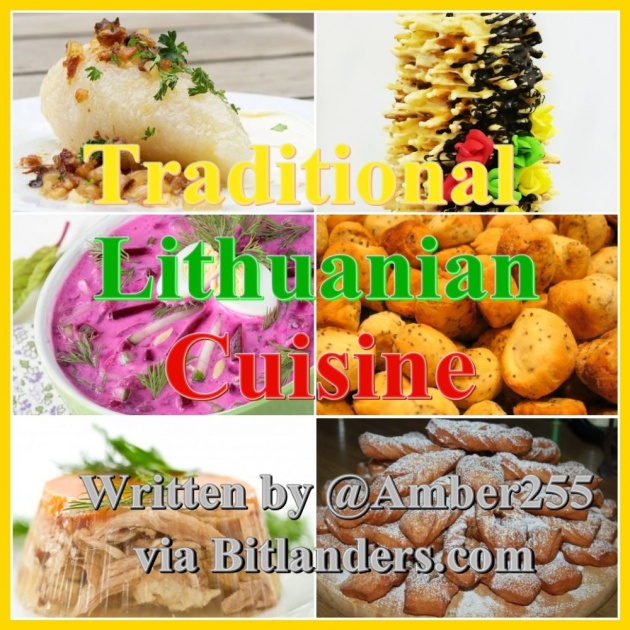
Traditional Lithuanian Cuisine - Photo credit: Amber255 via Bitlanders.com
Welcome to read my new blog. Bitlanders is a place where we can meet people of many cultures from all over the world. I know that my country, Lithuania, is a small one in this ocean of big well-known countries and nations. It is strange, but I have met some people abroad saying that nothing know about Lithuania, and even where it is. I guess, there are members who do not know much about Lithuania also. I have written a blog about Easter Customs and Traditions in Lithuania, and now I want to continue describing traditions and customs of my little country. This time, I want to introduce the traditional Lithuanian cuisine.
Why do I want to write about the Lithuanian cuisine? Because I like cooking, I am interested in authentic world's cuisines. Today, it's hard to believe that as a teenager, I was absolutely sure that I would never go to the kitchen at my own will. And when I first came up with an idea to bake a pie, I could not even turn on the oven. But, it turns out, life loves tricks. At least I could not really imagine that my first burnt cake could be the beginning. Little by little I made the little step away from hatred towards love, and today I cannot imagine my life without a kitchen. I fell in love with cooking. Not really at first sight. Slowly, even without knowing it, but with all my heart.
Well, we have not only different culture if compare some distant countries, but also we have different eating habits. What one nation considers as delicatessen, other nation may consider as weird and not an eatable thing. And that makes us so amazing. I guess, some traditional Lithuanian dishes for other cultures also may look weird and not eatable. But still, I want to introduce our cuisine to you. It is not in vain said that if you want to get to know another culture, try its cuisine.
Regrettably, even our knowledge about the traditional Lithuanian cuisine is often rotating in the circle of just a few dishes. They are, of course, most popular, but we have an old enough cuisine.
Food is not rational. Food is culture, habit, craving and identity. - Jonathan Safran Foer
Credit: brainyquote.com
There are one or many Lithuanian cuisines?
Presenting traditional Lithuanian cuisine to guests from other countries, we often perceive it as a homogeneous one. However, it is worth remembering that the traditional Lithuanian cuisine has changed over the centuries, representatives of different social strata have also fed a very different diet. Finally, both in the past, and now in different regions of Lithuania, there are different dishes and different ways of preparing the same dish.
The latter thing is best used by those who are engaged in rural tourism business - traditional Lithuanian regional dishes can become a great bait, attracting foreigners who have longed for old-fashioned eating and authenticity.
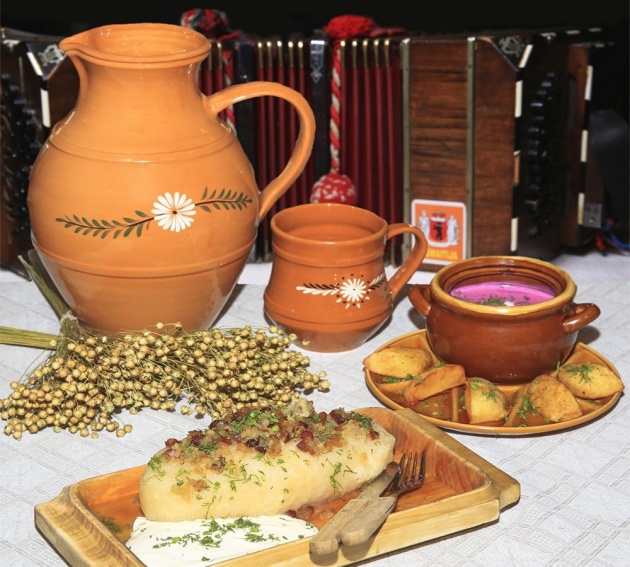
Lithuanian Cooking Traditions - Photo credit:tic.siauliai.lt
Simplicity is an important feature of traditional Lithuanian cuisine
We often rely on the fact that Lithuanians are a farmer's nation, who has been eating severe fatty and quite simple food since ancient times. However, it is enough to look at the cuisines of the old rulers of Lithuania, and the myth of the poor Lithuanian diet is instantaneously evaporated. In various historical sources, there are plenty of stories about the luxurious feasts made by the dukes. And it's not just beautiful stories. The Grand Dukes of Lithuania and other gentlefolk individuals were related to the most famous imperial families of Europe, and the dishes eaten by the rulers of Lithuania were also royal.
Of course, a typical rural or urban people's cuisine, of course, could not match what the noblemen ate. Many people in rural and urban areas have been eating quite simple meals, and the delicious products they ate only during the holidays.
By the way, the simplicity of the traditional Lithuanian dishes was not caused by mere deprivation, on the contrary, the simplicity of the food can be described as one of the most important features of traditional Lithuanian cuisine.
Traditional Lithuanian Dishes - Sandra Juodiene via Youtube.com
Traditional Lithuanian Regional dishes
The traditional cuisine of Aukstaitija region
The people of Aukstaitija region have always been famous for their flour's dishes: pancakes with a variety of stuffings, dumplings, and other dishes. Aukstaitija is famous for its soups: simple dairy with vegetables, cabbage with meat, and very original soups (for example, a beer soup). They perfectly know how to cook poultry. The hostesses bake and boil delicious sweets, especially donuts. This region is famous for the delicious berry-made or apple wine, and they produce a perfect beer.
The traditional cuisine of Dzukija region
Proverbs and sayings about the people of this region and the mushrooms were relevant both in ancient times and now. In this region of Lithuania, many dishes from mushrooms have always been produced: cooked mushroom soups, mushroom stews, baked, pickled, canned mushrooms. They make mushroom cheese, pies filled with mushrooms, filled dumplings.
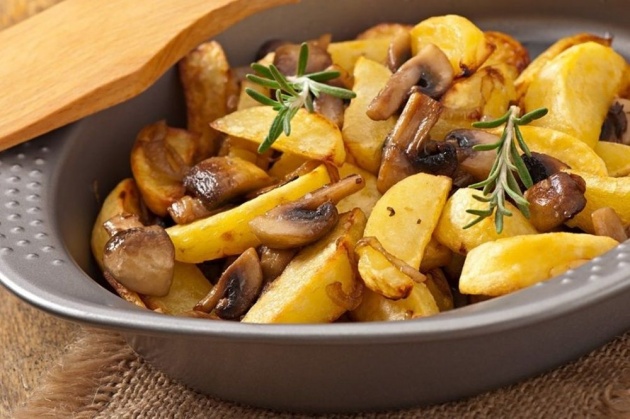
Traditional Lithuanian Regional Dishes - Baked Musrooms
Photo credit: delfi.lt
Lithuanians like the dried meat and Dzukija has been producing great dried sausages since ancient times. And if to talk about drinks, then all Lithuanians know their homemade vodka.
The traditional cuisine of Suvalkija region
Suvalkija is a region of Lithuania that can boast of authentic, meat products produced according to the old recipe. The most important is the traditional chopped meat "Skilandis" (tanned in cold smoke from a few months to a couple of years!), as well as excellent smoked sausages, hams. The people of this region from ancient times boiled borsch soup, which has become popular all over Lithuania. As a traditional drink, I will mention domestic black currant wine.
The traditional cuisine of Samogitia region also called Zemaitija
It is my native region, and its cuisine I know best of all. Probably, the most important dish of this region is the "Kastinys" - whipped sour cream with butter eaten with boiled potatoes. I have never prepared this traditional dish, but my grandmother knows well how to prepare it very very delicious. Also, well-known is boiled potatoes dyed into cannabis with cracklings or into salt with linseed. The Samogitians prepare meals of fresh meat, especially various stews; they bake sophisticated pies with berries, fruits, and jam.
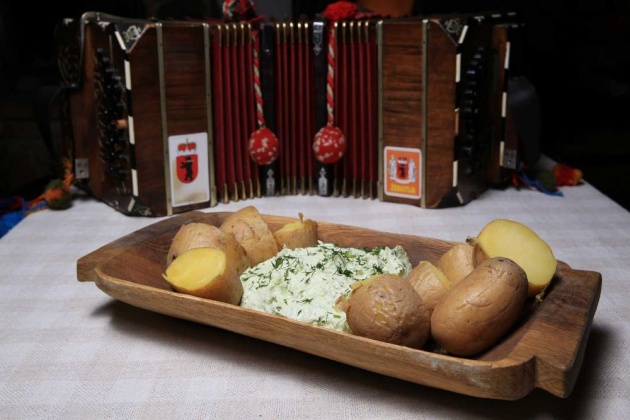
Traditional Lithuanian Regional Dishes - Kastinys
Photo credit: jonis.lt
Festive Lithuanian Dishes
Lithuanians love to eat a lot and a delicious meal - this is evidenced by the abundance and variety of festive meals. Each celebration, the beginning or end of the agricultural work: harvesting of potatoes, grains had and still has its own traditional dishes. Let's just I will mention three calendar holidays with special dishes.
Christmas Eve dishes
During Christmas Eve celebration, 12 dishes are usually placed on the table, and no one of them is prepared from the meat. Although, in each region of Lithuania, there are eaten some local dishes (for example, cannabis dishes are typical for Samogitians, the mushroom soups, dishes of buckwheat flour - for the Dzukija region), but fish, herring, mushroom dishes, wheat, peas, oatmeal or cranberry pap, snacks with poppy milk are eaten throughout all Lithuania. Ethnographers have counted about 100 Christmas Eve dishes that are known throughout Lithuania.
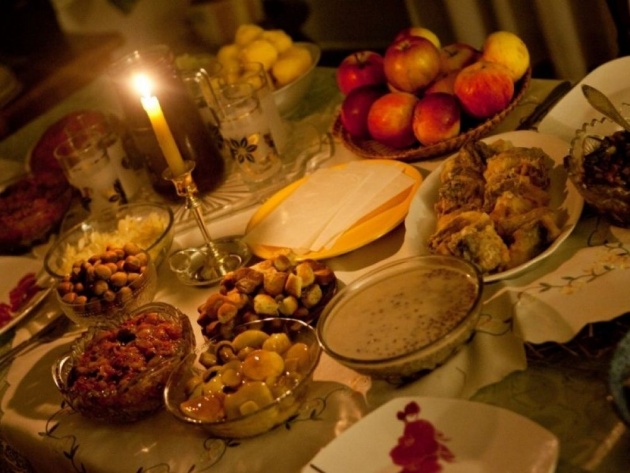
Festive Lithuanian dishes - Christmas Eve dishes
Photo credit: baltai.lt
Uzgavenes - Pancakes day - dishes
It's a real food feast, a feast of greasy and satiated meals - in the past, this feast in some regions lasted for almost a week! One of the most ancient meals can be considered a "Siupinys". It was made from peas, beans, cereals, potatoes, pigs' feet, tail, head, sometimes - some fat meat.
Over time, pancakes (flour, potatoes, yeasty) replaced traditional "Siupinys". Another traditional Uzgavenes meal is "Saltiena", boiled from the pigs' ears, feet, and head. The beer also was specially prepared for this feast.
Easter dishes
On the day of Easter, there always is eaten an ordinary meat dish - a fried veal's ham, a pig's head or a whole little pig, in some places - stuffed geese, turkey. On the table, the ceramic lamb's statuette or buttery "lamb" was sure to stand, also the special Easter cakes (with various stuffings, ingeniously decorated).
But the most important are painted Easter eggs. In some places in Lithuania, just after sitting at the festive table, each member of the family immediately receives an egg, and in some places, all members of the family are sharing one egg cut into pieces.
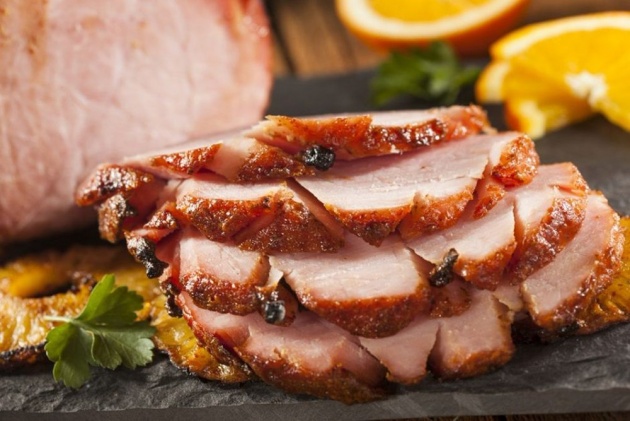
Festive Lithuanian Dishes - Fried Ham
Photo credit: kauno.diena.lt
Soviet times - culinary traditions have been cut off?
What impact had 50 years of Soviet occupation to the traditional Lithuanian cuisine is unambiguously difficult to assess. On the one hand, we have suffered losses - in the course of several decades, the meals of noblemen, craftsmen, and townsmen were completely or almost forgotten. At the time when there was a shortage of many basic foods (not to mention exotic fruits or spices), some traditional foods could not be produced, and it was difficult to create new dishes. My parents and grandparents told a lot about the Soviet times and how it was difficult to buy such simple products as meat, eggs, and even cheese, not to mention such products as mayonnaise, ketchup, and other.
By the way, it was during the Soviet times that many potato dishes have become popular in our kitchens, and now are presented as traditional Lithuanian dishes. On the other hand, the forced closure may have preserved authenticity as if preserved some of the Lithuanian cooking traditions, and the lack of products made hostesses to be more creative.
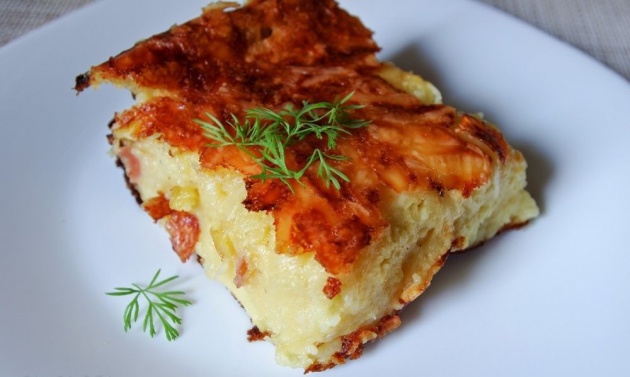
Traditional Lithuanian Dishes - Kugelis
Photo credit: moteris.lt
What can we be proud of?
By offering foreign guests heavy "Cepelinai"( Zeppelins) and often colorful "Saltibarsciai"(cold borscht soup), we forget a lot of simple but great products that are more worthy to be the cornerstone of the traditional Lithuanian cuisine. Presenting our cuisine, we can be proud of the excellent Lithuanian black rye bread, which is so loved by many long or short time visitors to Lithuania. We should more appreciate the usual white cheeses of curd (sweet, salty, sour, with caraway, dried, smoked, etc.) manufactured only by Lithuanians and neighboring Latvians.
Finally, the third product could be Lithuanian "Skilandis" - a product of chopped meat (pork) fermented in cold smoke. Also, we have a great quality Lithuanian beer that won many world's competitions. In addition, we have maintained many traditional dishes from meat, fish, cereals, vegetables, fruits and berries, dairy products...
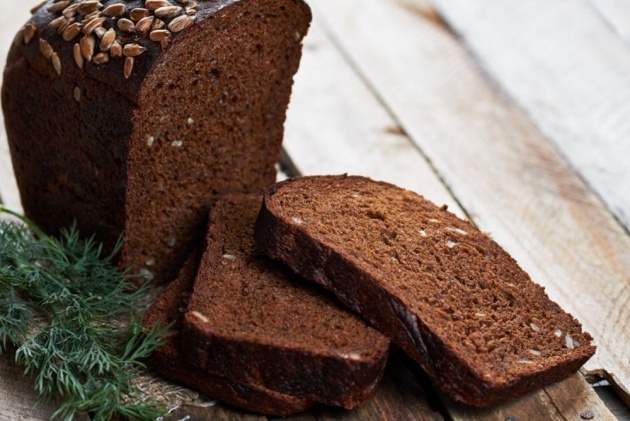
Lithuanian Cooking traditions - black bread
Photo credit: lamaistas.lt
The most popular traditional Lithuanian dishes
-
Cepelinai (Zeppelins)
Any text about traditional Lithuanian cuisine would be incomplete if it does not mention "Cepelinai". Some without this dish cannot imagine their lives, others do not eat it themselves, but they do offer it to their foreign guests.
In fact, "Cepelinai" is not a very authentic Lithuanian food, and elsewhere, it is produced and produced in a very similar way (for example, in the Czech Republic, Denmark, Poland), just this potato dish has not become the attribute of the main cuisines of these countries. In our country, the "Cepelinai" became the most famous dish of Lithuanian cuisine.
So, we state the following: the "Cepelinai" came to Lithuania from other countries, but in a few decades, this potato dish became so popular that apparently now it has to be called Lithuanian food.
Traditional Lithuanian Dishes - Cepelinai
Movie credit: Edmantas Kazbaras via Youtube.com
-
Sakotis (tree cake)
"Cepelinas" is not a single dish that came from another country to us and became most loved by people. 100 years ago, "Baumkuchen" came from Germany to Lithuania. The Germans themselves forgot it, and today they, themselves, and other countries admire the current Lithuanian cake called "Sakotis". It's a cake made using many eggs, so its color is very yellow.
-
Saltibarsciai (cold borscht soup)
"Saltibarsciai" also known as cold beetroot soup, is most popular in Lithuania during the summer season. And nothing is strange here - you do not want to eat hot soups when it's hot outside. There are some of its recipes, but the most popular soup is from boiled beetroot, cucumber, eggs, greenery, and kefir. It is eaten with boiled potatoes.
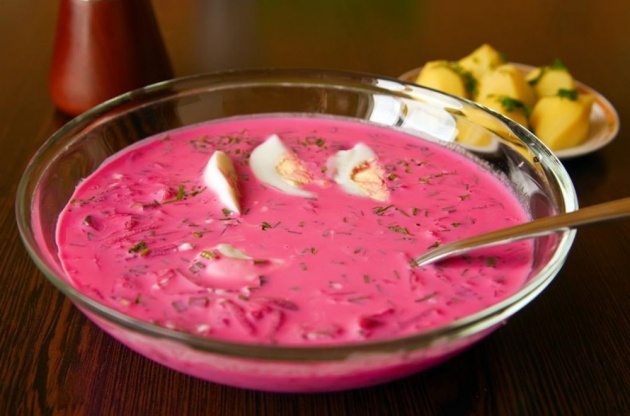
Lithuanian Cuisine - Saltibarsciai - Photo credit: taringa.net
-
Vedarai
"Vedarai" is one of the most controversial Lithuanian dishes. But those who hurry to judge them after a short look should first try it. It's not for nothing Lithuanians are proud of this dish for several centuries. It is a dish that makes you fall in love after trying. "Vedarai" is made very simply, it is the intestines of pigs with a filling of grated potatoes, flavored with cracklings. The other option is with a filling of pig's blood with boiled grits. Both options are baked in the oven.
-
Saltiena
"Saltiena" - the broth of meat and bones with pieces of meat. It is a widespread dish in Eastern European cuisine. It is produced in two ways: natural, when the natural gelatine material is released by boiling animal bones, or modern, adding nutritious gelatin. Experienced housewives know that the most important ingredient for having sturdy "Saltiena" is pigs feet. Then you can also add ears, tail, head, slices of meat, sugar bore of beef bone or several varieties of chicken wings.
While reading, check Querlo chat:
On the final note
We are an old nation, and the elder a nation is, the more interesting, the more special is its kitchen. Lithuanian cuisine smell of old customs, there you will feel the breath of the kitchens of other countries, rulers and nobles luxury, the simplicity of clergy, the creativity of the townspeople and villagers. And there are also ethnographic regions with authentic cuisines.
But times change, and our diet changes. More and more alien cultures are bringing their breath not only to our customs. but also to our cuisine. The culinary heritage is not material, it is a tradition of food production and eating, which for centuries has been very conservative. In the memory of old people, we have preserved the unique things of this heritage. Now, this tradition has clearly disappeared. The last decades have cultivated a new generation, which has different eating habits than it used to be for centuries. On the other hand, this generation lives altogether differently - they travel a lot and do not work such farm works as used our ancestors.
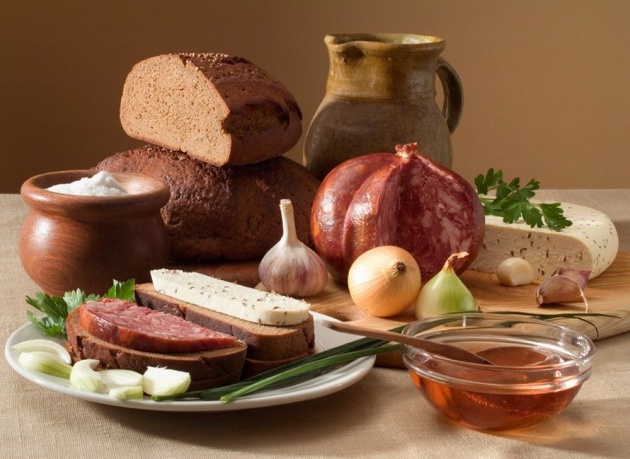
Culinary Heritage - Photo credit: universitetozurnalistas.kf.vu.lt
The way of nutrition is very closely connected with the way of life - here lies the problem of preserving the tradition of culinary heritage. If a person worked hard physically, it's clear he was eating heavy food.
Sometimes it is said that the world's openness makes a big harm to our culinary heritage: pizza, seafood, etc. I disagree. The strength of our culinary heritage is the openness of the world to more than 600 years. So, I do not see anything wrong if the pizza after a good century will become our traditional meal. It is important not to abandon the tradition of culinary heritage and to communicate it as a living, open to the world heritage.
But here is one thing I want to note. Our old people like to say that earlier, even eating heavy fatty food people were not so obese as they are now. Even young people now have some overweight. And obesity is becoming a problem. But in my opinion, there is not a fault only of changed diet and unusual to us dishes that became so popular. We can blame our passive lifestyle, little movement, hours online, and so on.
Cooking is all about people. Food is maybe the only universal thing that really has the power to bring everyone together. No matter what culture, everywhere around the world, people get together to eat. - Guy Fieri
Credit: brainyquote.com
Always remember that it is important not only what we put into ourselves, but also what we think and how we behave.
***************************************************************************************************
Thank you for stopping by and reading my blog.
2018, All Rights Reserved.
You are very welcome to join Bitlanders and share your valuable knowledge and opinion.
***************************************************************************************************
You can check my other blog about Lithuania:
1. Easter Customs and Traditions in Lithuania
Come back to find more...
**************************************************************************************************



